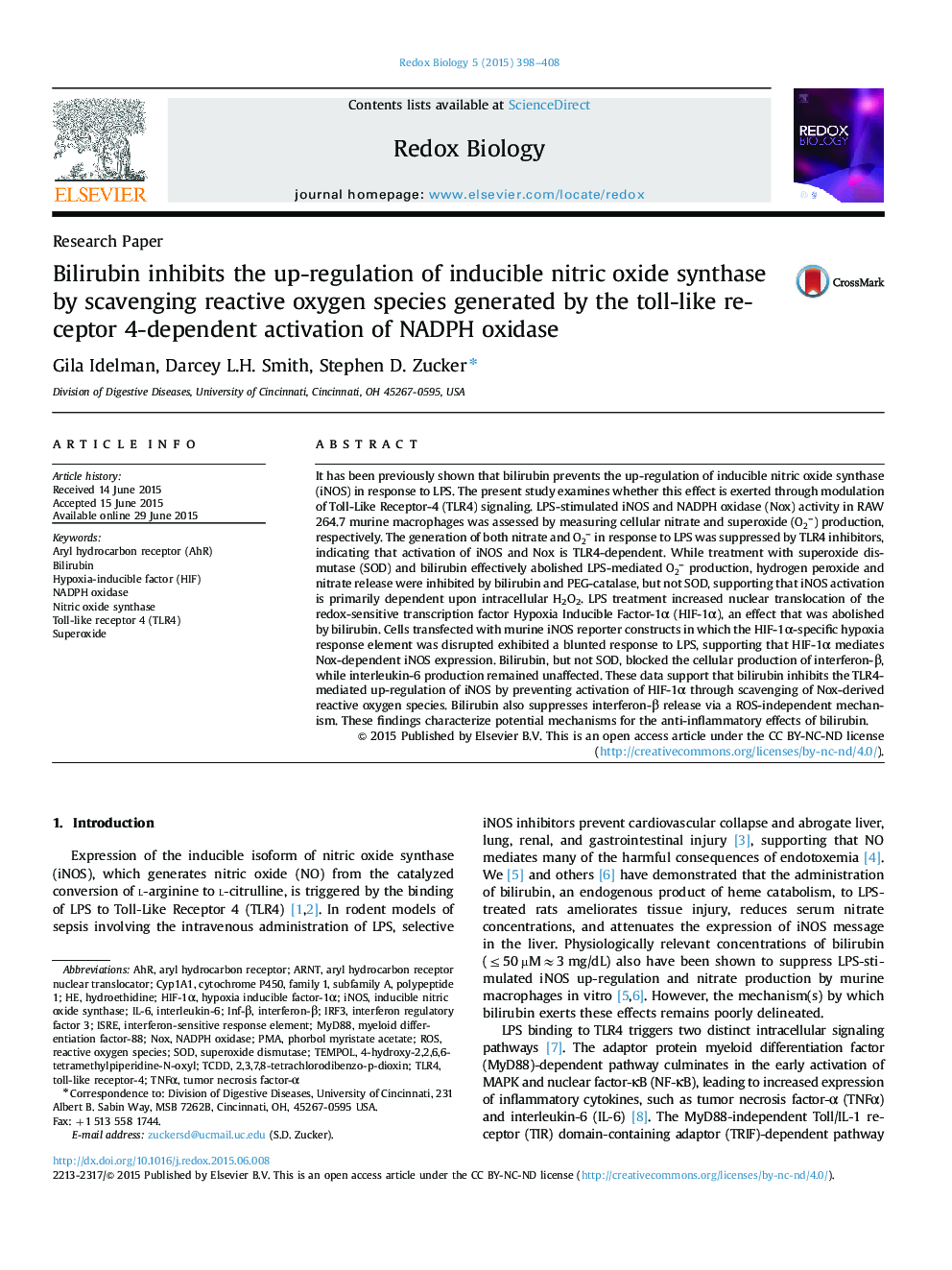| کد مقاله | کد نشریه | سال انتشار | مقاله انگلیسی | نسخه تمام متن |
|---|---|---|---|---|
| 1923169 | 1535845 | 2015 | 11 صفحه PDF | دانلود رایگان |

●Bilirubin blocks TLR4 signaling by scavenging NADPH oxidase-derived reactive oxygen species.●Bilirubin specifically inhibits the TRIF-dependent TLR4 signaling pathway.●LPS activation of inducible nitric oxide synthase is mediated by HIF-1α.●Macrophages exhibit reciprocal regulation of HIF-1α and aryl hydrocarbon receptor pathways.●Potential mechanisms underlying the anti-inflammatory effects of bilirubin are delineated.
It has been previously shown that bilirubin prevents the up-regulation of inducible nitric oxide synthase (iNOS) in response to LPS. The present study examines whether this effect is exerted through modulation of Toll-Like Receptor-4 (TLR4) signaling. LPS-stimulated iNOS and NADPH oxidase (Nox) activity in RAW 264.7 murine macrophages was assessed by measuring cellular nitrate and superoxide (O2−O2−) production, respectively. The generation of both nitrate and O2−O2− in response to LPS was suppressed by TLR4 inhibitors, indicating that activation of iNOS and Nox is TLR4-dependent. While treatment with superoxide dismutase (SOD) and bilirubin effectively abolished LPS-mediated O2−O2− production, hydrogen peroxide and nitrate release were inhibited by bilirubin and PEG-catalase, but not SOD, supporting that iNOS activation is primarily dependent upon intracellular H2O2. LPS treatment increased nuclear translocation of the redox-sensitive transcription factor Hypoxia Inducible Factor-1α (HIF-1α), an effect that was abolished by bilirubin. Cells transfected with murine iNOS reporter constructs in which the HIF-1α-specific hypoxia response element was disrupted exhibited a blunted response to LPS, supporting that HIF-1α mediates Nox-dependent iNOS expression. Bilirubin, but not SOD, blocked the cellular production of interferon-β, while interleukin-6 production remained unaffected. These data support that bilirubin inhibits the TLR4-mediated up-regulation of iNOS by preventing activation of HIF-1α through scavenging of Nox-derived reactive oxygen species. Bilirubin also suppresses interferon-β release via a ROS-independent mechanism. These findings characterize potential mechanisms for the anti-inflammatory effects of bilirubin.
Figure optionsDownload as PowerPoint slide
Journal: Redox Biology - Volume 5, August 2015, Pages 398–408